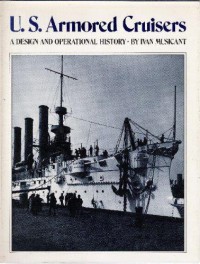A good operational history, but misses the bigger picture

Ivan Musicant's book provides a class-by-class description of the armored cruisers built by the United States Navy between the late 1880s (the beginning of what Musicant terms "the American naval renaissance") and the abandonment of the concept just two decades later. As Musicant explains at the end of his book, armored cruisers (which were defined by the preference for armored protection over speed in their design) were anachronistic and superseded quickly by the advances in naval warfare that spawned the first battlecruisers in 1908. For much of that period, armored cruisers were the most powerful oceangoing vessels in the U.S. fleet and key to ideas of American power projection as the United States began to exert its power on the national stage.
The problem with Musicant's book is that there is little effort to explain the doctrine behind the vessels, or how these ideas were reflected in the design and deployment of the ships. Instead Musicant offers readers a more conventional operational history of each vessel, one that describes their various deployments and modifications over their lifespan. In this respect his book contrasts poorly with John Reilly and Robert Scheina's American Battleships, 1886-1923: Predreadnought Design and Construction, which offers a far more comprehensive analysis of the contemporary development of a different class of warships. Thus, while Musicant's book remains a useful account of the history of these warships, it is far from the final word on their development at a pivotal time in American naval history.






